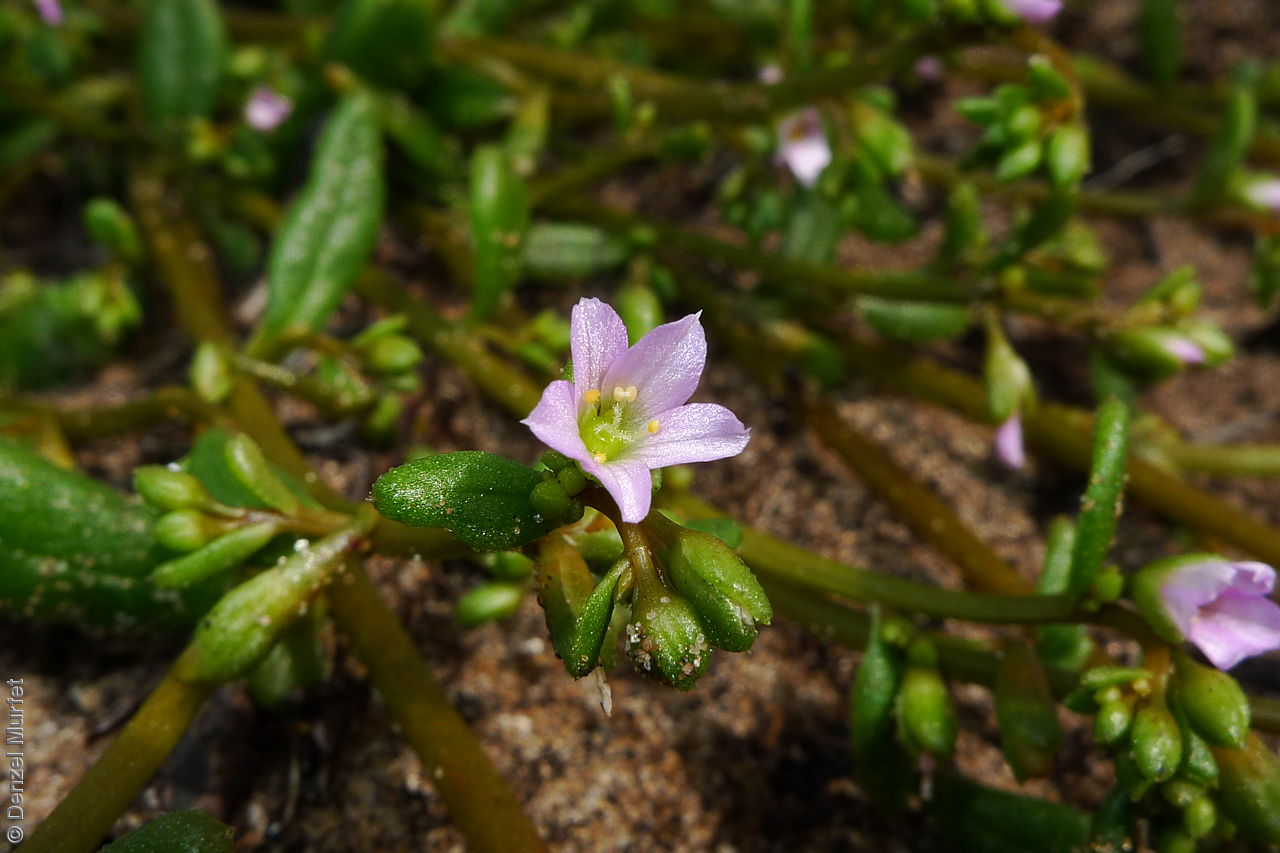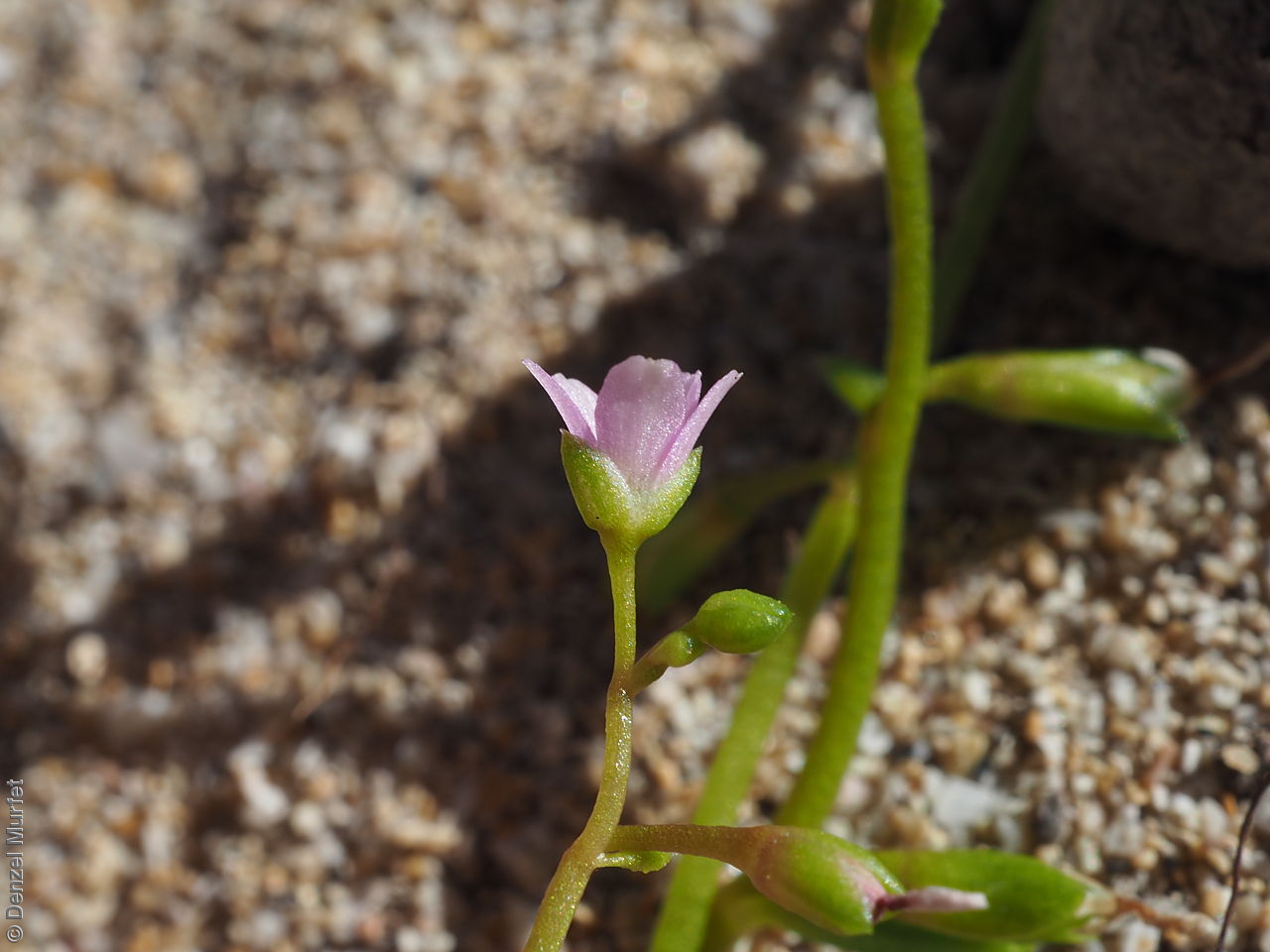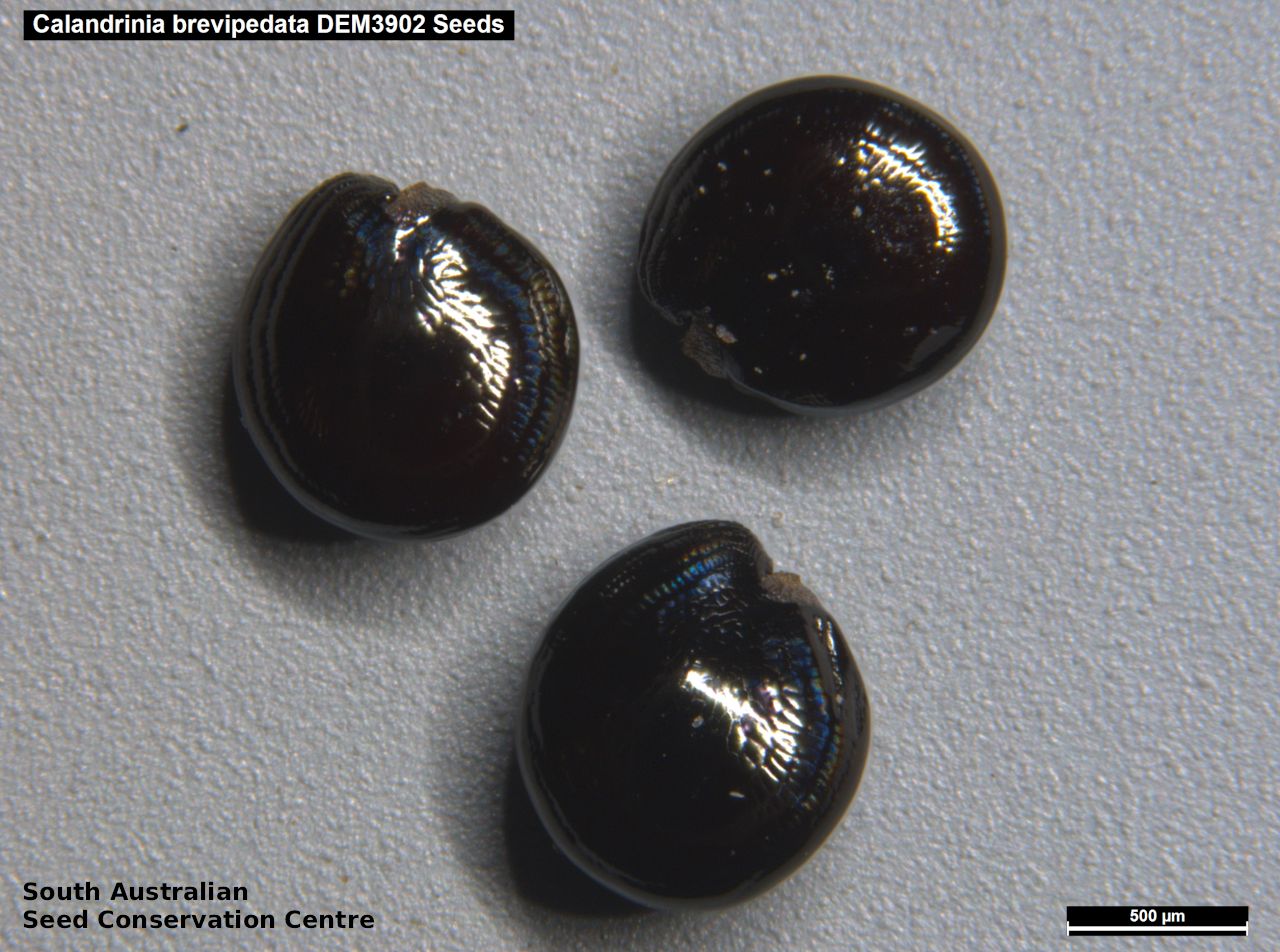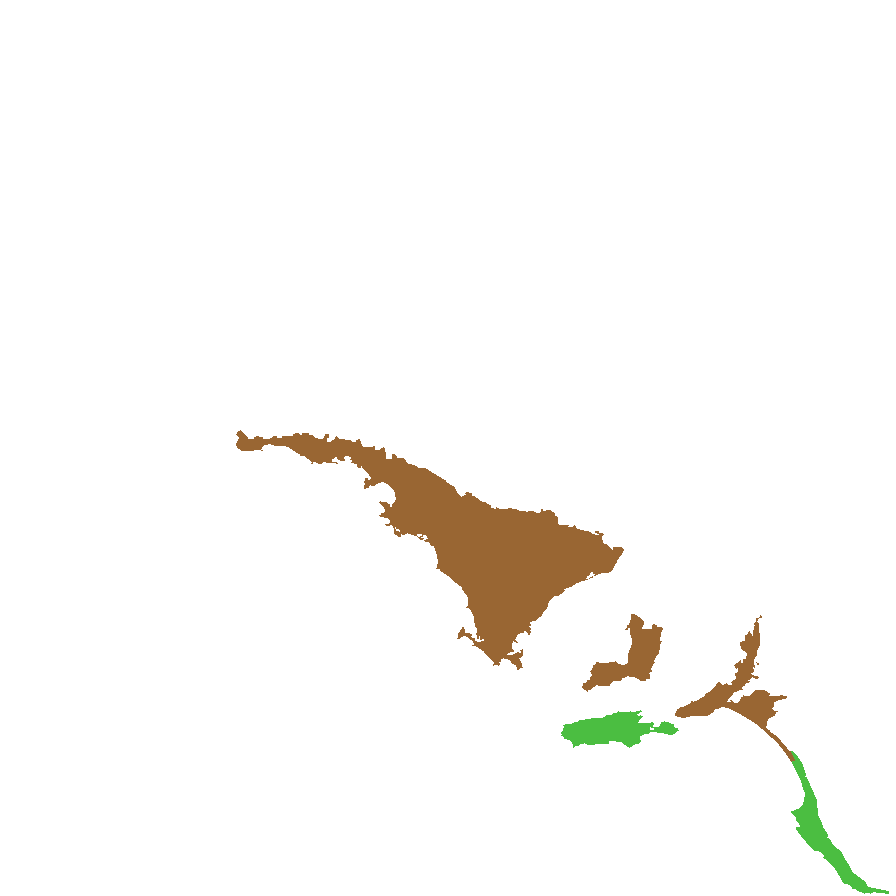















Prior names
Parakeelya brevipedata
Calandrinia cygnorum
Etymology
Calandrinia named after Jean-Louis Calandrini (1703-1758), a Swiss scientist, professor of mathematics and philosophy. Brevipedata from the Latin 'brevis' meaning short and 'pedatum' meaning like a foot, possible referring to the short pedicel on the flower..
Distribution and status
Found scattered on Eyre Peninsula, Yorke Peninsula, Kangaroo Island, southern Mount Lofty Ranges and the South-east of South Australia, growing on coastal sand dunes. Also found in Western Australia. Native. Common in South Australia. Common in Western Australia.
Herbarium regions: Eyre Peninsula, Southern Lofty, Kangaroo Island, South Eastern, Green Adelaide
NRM regions: Adelaide and Mount Lofty Ranges, Eyre Peninsula, Kangaroo Island, South East
AVH map: SA distribution map (external link)
Plant description
Ground hugging or sprawling fleshy annual herb with flowering stalk to 30 cm long. Leaves basal and on the flower stems, alternate, oblanceolate, stalk-less to 40 mm long and 5 mm wide, reddish when exposed to the sun, or green when growing protected under shrubs. Inflorescence an open spike with white to pale pink flowers scattered along the stem. Flowering between August and November. Fruits are pale brown oblong-cylindrical capsule to 5 mm long with 3-valves opening at the apex, releasing numerous seeds. Seeds are shiny black reniform-ovoid seed to 1.1 mm long and 1 mm wide, with a smooth surface. Seed embryo type is peripheral.
Seed collection and propagation
Collect seeds between October and January. Collect mature capsules, those that are turning a red-brown colour and contain dark seeds. Place the capsules in a tray and leave to dry for one to two weeks. Then rub the capsules gently by hand to dislodge the seeds. Use a sieve to separate the unwanted material. Store the seeds with a desiccant such as dried silica beads or dry rice, in an air tight container in a cool and dry place. Seed viability is usually high.
| Location | No. of seeds (weight grams) | Number of plants | Date collected | Collection number Collection location | Date stored | % Viability | Storage temperature |
|---|---|---|---|---|---|---|---|
| MSB | 2,900 (0.81 g) | 30 | 31-Oct-2007 | RJB75372 South Eastern | 100% |
Number of plants: This is the number of plants from which the seeds were collected.
Collection location: The Herbarium of South Australia's region name.
% Viability: Percentage of filled healthy seeds determined by a cut test or x-ray.